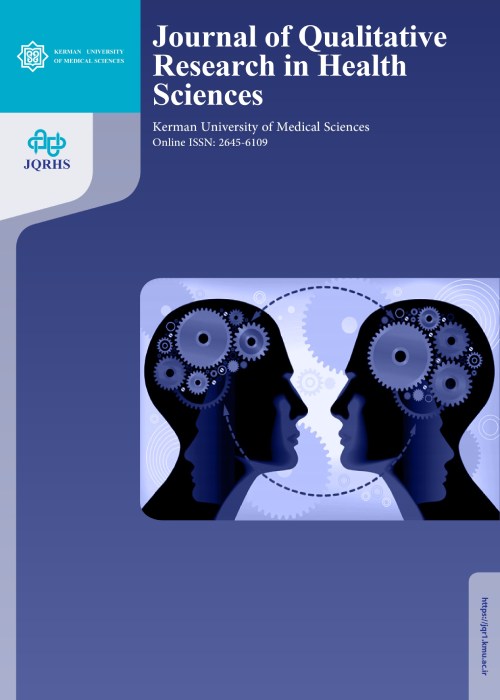Adolescent's Perception of Risky and Protective Factors for Drug Abuse: Guided Content Analysis Based on Ecological Model Approach
Author(s):
Abstract:
Introduction
Drug abuse is a serious threat to community health increasing in lower age groups. Studies have shown that the majority of adolescents have started the drug abuse in the age of 12 to 13 years. We aimed to explain the perception of risky and protective factors of drug abuse among teenagers.Method
This was a qualitative study conducted through content analysis based on ecological model. Participating (n = 38) were male (n = 16) and female (n = 22) students at the third grade of high school in Isfahan city, Iran, selected via purposive sampling. Data were collected and analyzed through interviews.Results
Using ecological approach, four main levels of personal, interpersonal, organizational and social, and public policies divided into the risk and protective factors. At personal level, lack of knowledge about the harms of drug abuse and lack of life skills, at interpersonal level, role of family and not caring religious rituals by families were mentioned, at organizational and social levels, internet and satellite access without any control by the parents and at public policies levels, drugs entry to the country were risk factors for addiction mentioned by the participants. Protective factors were as knowledge and awareness about the harms of drugs, and enhancement of life skills at personal level, influential role of the family and strengthening religious rituals at interpersonal level, assigning one educational course on this subject for adolescents at organizational and social level, and investigating the causes and related factors of addiction and creation of alternative leisure activities at public policies were mentioned by participants, too.Conclusion
In this study, the risk and protective factors of drug abuse were distinguished by adolescents at different levels including personal, interpersonal, organizational and social, and public policies levels. These issues should be considered in designing and implementing preventive intervention programs.Keywords:
Language:
Persian
Published:
Journal of Qualitative Research in Health Sciences, Volume:5 Issue: 3, 2016
Pages:
263 to 272
magiran.com/p1734531
دانلود و مطالعه متن این مقاله با یکی از روشهای زیر امکان پذیر است:
اشتراک شخصی
با عضویت و پرداخت آنلاین حق اشتراک یکساله به مبلغ 1,390,000ريال میتوانید 70 عنوان مطلب دانلود کنید!
اشتراک سازمانی
به کتابخانه دانشگاه یا محل کار خود پیشنهاد کنید تا اشتراک سازمانی این پایگاه را برای دسترسی نامحدود همه کاربران به متن مطالب تهیه نمایند!
توجه!
- حق عضویت دریافتی صرف حمایت از نشریات عضو و نگهداری، تکمیل و توسعه مگیران میشود.
- پرداخت حق اشتراک و دانلود مقالات اجازه بازنشر آن در سایر رسانههای چاپی و دیجیتال را به کاربر نمیدهد.
In order to view content subscription is required
Personal subscription
Subscribe magiran.com for 70 € euros via PayPal and download 70 articles during a year.
Organization subscription
Please contact us to subscribe your university or library for unlimited access!


